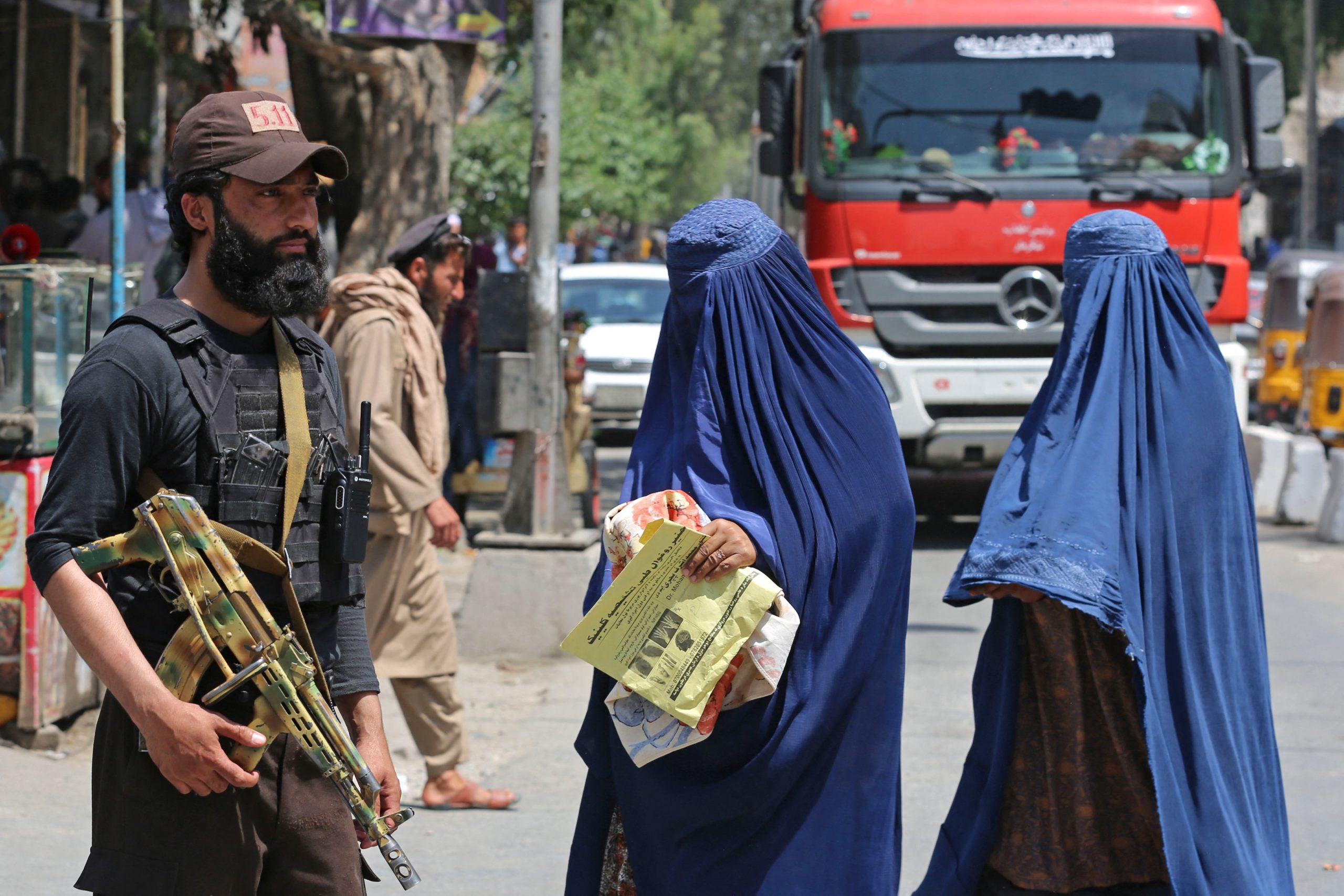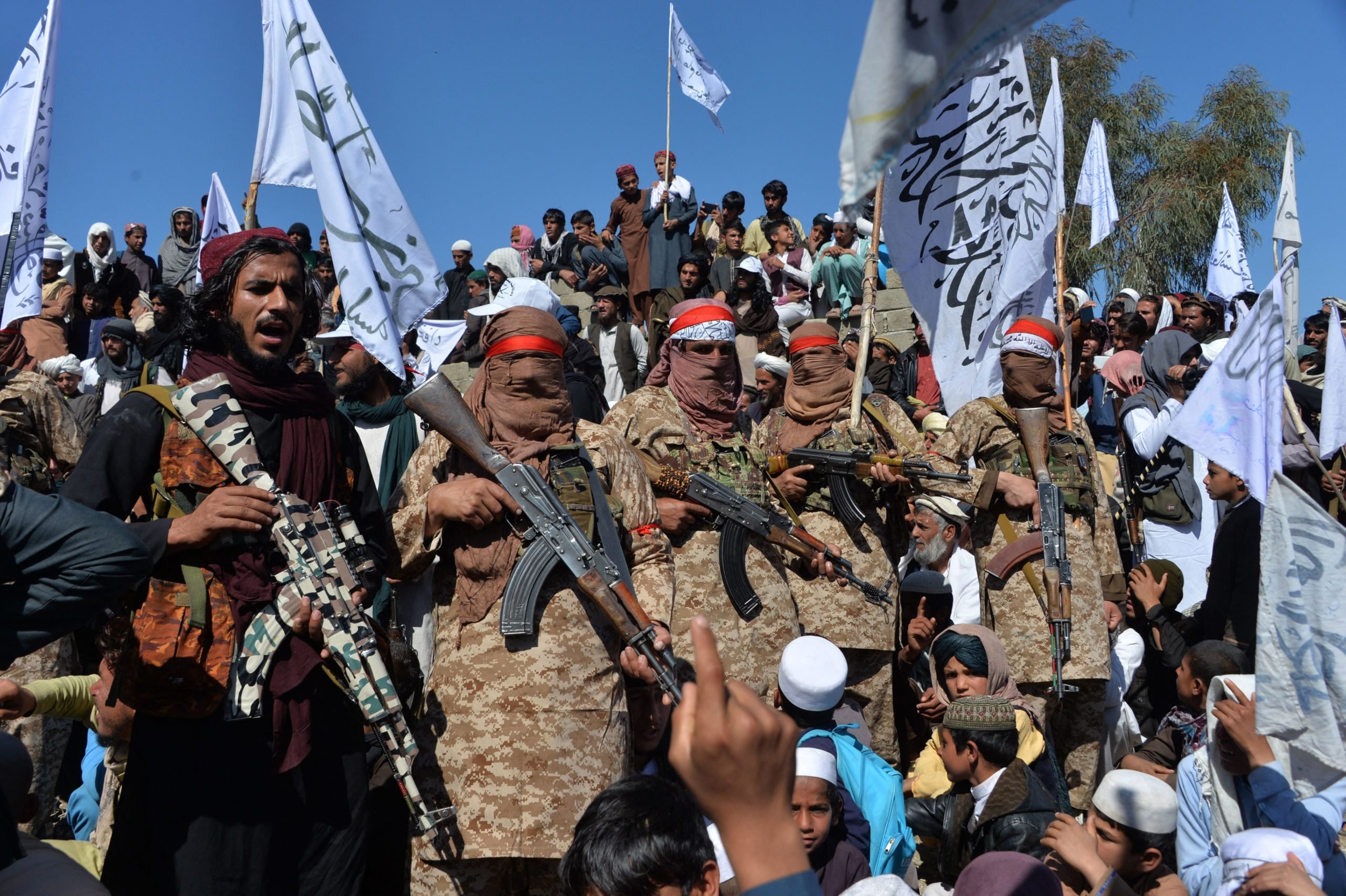As the Biden administration approaches the third anniversary of its withdrawal from Afghanistan, the region is returning to some semblance of what it was before the 9/11 attacks and two decades of U.S. involvement, according to multiple reports and former U.S. officials who spoke to the Daily Caller News Foundation.
The US has lost thousands of soldiers and spent trillions of dollars in 20 years of war fighting terrorism in Afghanistan in response to the 9/11 attacks. attack, according to He told the Council on Foreign Relations (CFR) and ABC News that the Biden administration withdrew U.S. troops from Afghanistan in August 2021, in what was widely considered a disastrous operation. Despite the Biden administration's promises that such a scenario would not happen, the Taliban established iron control, al-Qaeda began to recover, and the situation in the region reverted to pre-war status, according to multiple reports and former U.S. officials who spoke to DCNF. (Related article: Iranian government agents provided 'financial support' to Gaza protesters, US intelligence chief says)
“Afghanistan is not back to how it was before 9/11, and in many ways it is much worse now. Our disastrous withdrawal has fueled new global enthusiasm for Islamic extremism,” Simone Ledeen, a former Deputy Assistant Secretary of Defense for the Middle East, told DCNF. “The Biden Administration's denial of the real and growing threat from Afghanistan is consistent with its claims (falsely asserted by President Joe Biden in June) that the withdrawal has been successful and that no U.S. troops have been killed under his administration. Warning lights are flashing red.”
More than 2,312 U.S. troops have been killed in Afghanistan, including 2,218 soldiers who died during the first combat mission that began in 2001 under then-President George W. Bush, and more than 100 who died after a training mission known as Operation Freedom Sentinel began in 2014 under the Obama, Trump and Biden administrations. according to To ABC News.
Following then-President Barack Obama's 2009 troop surge, 1,534 Americans died in the country between that year and 2012. In total, more than 20,066 U.S. service members were wounded in combat during the two decades of war, according to ABC News.
Former President Donald Trump's administration, after taking office in 2017, eventually reached a settlement and began withdrawing more troops in 2020, as long as the militias did not use Afghanistan for terrorism-related activity and adhered to strict guidelines, according to CFR.
President Joe Biden withdrew the remaining U.S. troops from Afghanistan in August 2021, following weeks of unrest that left 13 service members dead at Kabul airport.
From 2001 to 2021, the United States spent more than $2 trillion on humanitarian and military operations in Afghanistan. according to Director of the Watson Institute for International and Public Policy at Brown University. The United States left more than $7 billion in military equipment behind in 2021, and the Taliban seized control of the area within days of withdrawing.
Kabul, Afghanistan – August 25: (Photo by New Zealand Defence Force via Getty Images)
The Taliban have made several promises about how they will be governed after the Biden administration withdraws U.S. troops, including guaranteeing women's rights, refusing to cooperate with al-Qaida and strengthening the region's economy. according to The Taliban overran Afghanistan within days of the US withdrawal, destroying the Afghan militias that US troops had trained, the BBC reported.
“All the evidence is there. Remember what I said about Afghanistan? I said al-Qaida isn't there. I said you're going to get support from the Taliban,” Biden told reporters in mid-2023. “What's happening now? What's going on? Read the reports. I was right.”
Afghanistan after US troops withdraw
Since the US withdrawal in 2021, women's rights have been stripped by the Taliban. Afghanistan last The Taliban also ban women from attending university, school beyond sixth form, or working in government positions, the BBC reported in its 2023 Women's Peace and Security Index. Even simple activities like walking in the park or playing sports are obstacles for women in the region.
According to a 2023 UN report, opium production has dropped significantly but has not fallen to zero. reportSince the withdrawal of U.S. troops, Afghanistan has been hit by a humanitarian crisis, with the Taliban unable to provide even basic services to the population. according to To the Heritage Foundation.

TOP SHOT – Afghan women wearing burqas walk in front of Taliban guards on a street in Jalalabad, April 30, 2023. (Photo by Shafiullah Kakar/AFP) (Photo by Shafiullah Kakar/AFP via Getty Images)
“The moment we left, Afghanistan was plunged into mass famine. It is the government's responsibility to feed its people, not ours,” former State Department official Gabriel Noronha told DCNF, noting that experts are “divided in opinion” about the U.S.'s role in providing aid to Afghanistan at this point.
Biden has promised that al-Qaeda, the terrorist organization responsible for the 9/11 attacks, will not resurrect or return to Afghanistan, but reports suggest that it has indeed re-activated in the region, along with other terrorist groups such as ISIS-K. A Congressional Research Service report said that “ties remain strong” between the Taliban and al-Qaeda, and that the terrorist organization “continues to pose a threat to the region and beyond.” report I've been saying this since May.
“The Taliban and al-Qaida maintain close ties that were there before 9/11,” Ledeen told DCNF. “There are several different terrorist organizations in Afghanistan that train, plan, and in some cases network with each other.”

TOP SHOT – Afghan Taliban fighters and villagers attend a rally in Alingar district, Laghman province, on March 2, 2020. (Photo by NOORULLAH SHIRZADA/AFP via Getty Images)
A February UN national security report said al-Qaida has built at least eight new training camps since August 2021 and has access to a network of safe houses across Afghanistan. Obtained According to a report by CBS News, the terrorist group also runs several religious schools where it instructs and trains children to become extremists.
Al-Qaeda began making millions of dollars per week from gold mines in northern Afghanistan in 2022, a research institute has announced. investigation The report, by a UK-based threat analysis firm and obtained by Foreign Policy in March, cited local sources and said some revenue from the mines “goes directly into the pockets of senior Taliban officials and their personal networks.”
“There is certainly a large presence of ISIS and al-Qaida in Afghanistan,” Noronha told DCNF.
According to the CRS report, the group has resurged but does not currently have the capacity to carry out attacks on the scale of September 11. A State Department spokesperson told DCNF that the US's primary concern is “ensuring that Afghanistan does not again serve as a base for terrorist attacks against the United States” and that there are “no clear indications that al-Qaida is actively rebuilding its operational capabilities.”

TOP SHOT – A Taliban guard stands guard as a burqa-clad Afghan woman (right) walks through the streets at a market in Baharak district, Badakhshan province, on February 26, 2024. (Photo by WAKIL KOHSAR/AFP via Getty Images)
“I'm a little skeptical of claims that al-Qaida is fully operational again,” former CIA officer and Defense Priorities researcher Michael DiMino told DCNF, pointing to the damage the group suffered during two decades of war. “These groups are a threat, and we have to keep an eye on them… But the idea that we're going to miss any kind of burst of activity is something I'm not buying without further indications.”
The Biden administration has pumped about $2.8 billion in humanitarian and development aid into the region since its withdrawal in 2021 to quell some of the problems plaguing Afghans under Taliban rule. according to to the Special Inspector General for Afghanistan Reconstruction (SIGAR).
Former SIGAR report U.S. international aid to Afghanistan has been found to be channeled in ways that risk it being diverted to the Taliban and other extremist groups.
There are no signs that U.S. troops will return to the region in the near future.
“The US has zero strategy for Afghanistan. The government has no game plan for how to deal with the region,” Noronha told DCNF. “The mindset was basically, 'OK, we screwed this up. We have to forget about this. Let's pretend it doesn't exist anymore.' They certainly haven't been able to conduct over-the-horizon counterterrorism attacks, and that's not healthy.”
“The political reality is that there will never be a U.S. military presence in Afghanistan for 100 years,” Noronha said.
The Pentagon and the White House did not immediately respond to requests for comment.
Editor's note: This story has been updated to reflect the total number of U.S. casualties in Afghanistan's 20-year war.
As an independent, nonpartisan news service, all content produced by the Daily Caller News Foundation is available free of charge to any legitimate news publisher with a large readership. All republished articles must include our logo, reporter byline, and affiliation with the DCNF. If you have any questions about our guidelines or partnering with us, please contact us at licensing@dailycallernewsfoundation.org.







